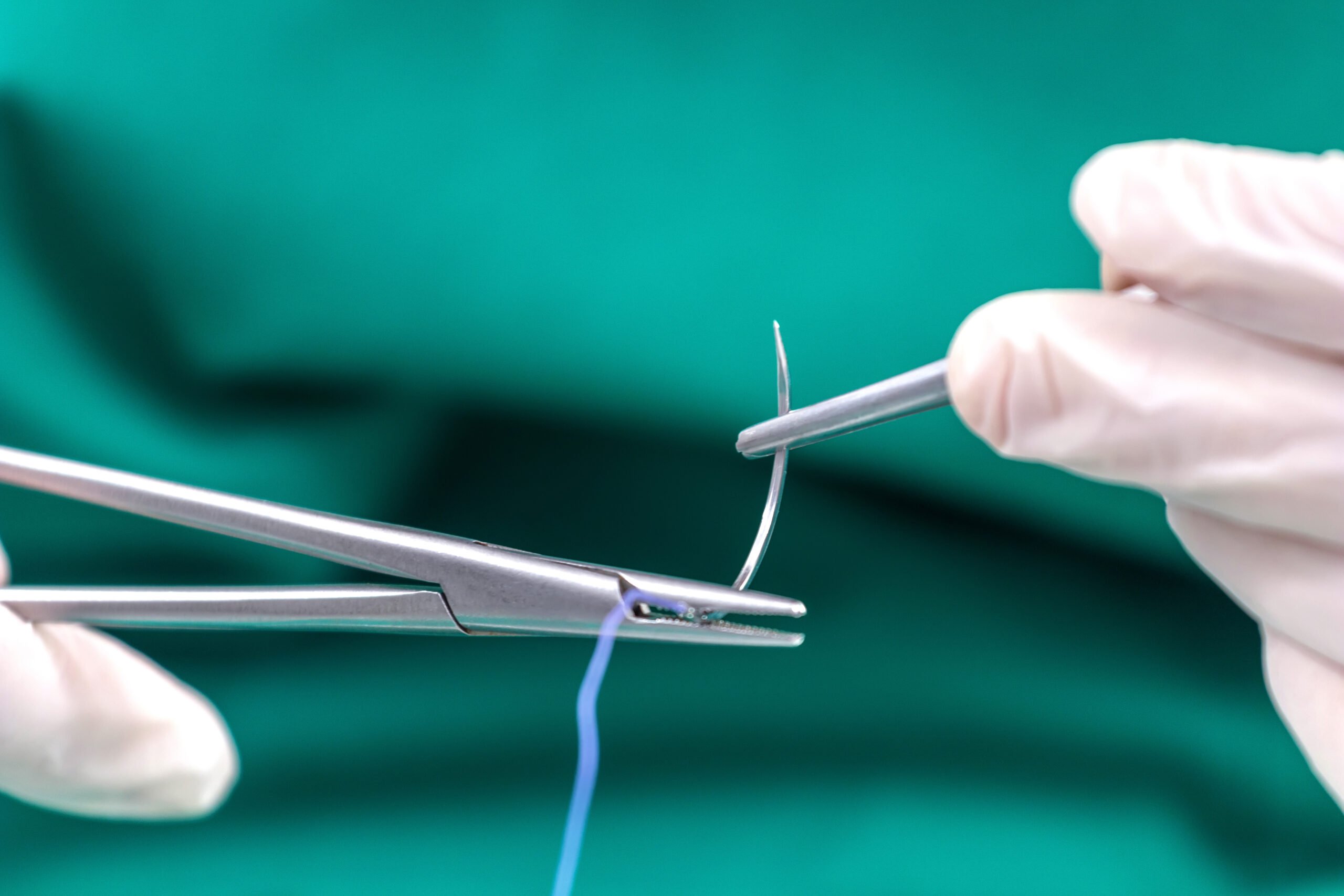Surgeons, doctors, and practitioners across the world use sutures routinely in day-to-day procedures to aid in the repair of wounds. Most people have a brief understanding of the process – a needle and thread applied repeatedly to the area to close the open wound.
In this article, Team Medicaldive into sutures with a little more details, exploring the varying types and purposes of surgical sutures, how they relate to stitching, technique, and much more.
Types of Structures
There are numerous types of sutures, but to make things simpler, they can be classified as either absorbable, or non-absorbable. Within these classifications, a suture will either be ‘monofilament’, meaning they consist of only a single thread to pass more seamlessly through tissue, or ‘braided’, with several threads that have been combined together, offering a greater amount of security on the wound. Lastly, sutures will either be made of natural or synthetic materials, each being properly sterilised before use.
Absorbable Sutures
Absorbable sutures possess the ability to be digested thanks to natural enzymes found within our body tissue. Each type has indications for certain procedures and absorption time. Types of absorbable sutures include:
- Glyconate
- Polyglactin
- Polyglecaprone
- Polyglycolic Acid
- Polyglyconate
- Poliglecaprone
- Polydioxanone
- Cat Gut
Non-absorbable Sutures
As can likely be inferred, non-absorbable sutures do require a doctor to remove them after healing has occurred. Types of non- absorbable sutures include:
- Nylon
- Polypropylene
- Polyamide
- Silk
- Polyester
Sutures vs. Stitches
A common mistake made by many is that the terms ‘sutures’ and ‘stitches’ are interchangeable, which isn’t correct. Suture refers to the medical device employed by surgeons, doctors, and practitioners to aid in healing and repairing a wound. Stitching, however, refers to the technique adopted by the surgeons, doctors, and practitioners to aid in healing and repairing a wound.
Application & Techniques
Simply attaching your suture of choice to a needle and performing a cross-stitch to an open wound is unlikely to deliver the desired repair or healing for the patient. A range of techniques have been developed to assist in a myriad of procedures to promote the best outcome. These include:
Continuous Sutures
This is the common, repeated application of stitching using a single strand of suture material. It is popular given the ease and speed of replacement, while also enjoying a great deal of strength through distribution of tension evenly across the wounded area.
Interrupted Sutures
To ensure that a wound is securely closed, an interrupted sutures technique will apply multiple strands, being cut, and tied off once a stitch is complete. Should one break, the wound will remain closed thanks to the other stitches remaining in place.
Deep Sutures
If aesthetics is an important consideration (such as with wounds on the facial layers), deep suturing is a technique to place suture materials under layers of tissue.
Buried Sutures
When large sutures are required to be used for wounds deeper in the body, buried sutures are applied so that the knot will be found under the area to be closed off and will not be removed.
Purse-String Sutures
This technique has got its name for its similarity to the effect of pulling at purse-strings; a continue suture applied around a wound and subsequently tightened to bring it to closure.
Learn More from Team Medical Suppliers
If you would like more information surrounding surgical suturesfor your surgery, or any of the other medical products we have available, please feel encouraged to contact the helpful staff at Team Medical Suppliestoday by calling 1300 22 44 50 or by taking a short moment to enter your details on our simple online enquiry form.

